Guinea fowl: The peculiar bird with a plethora of uses
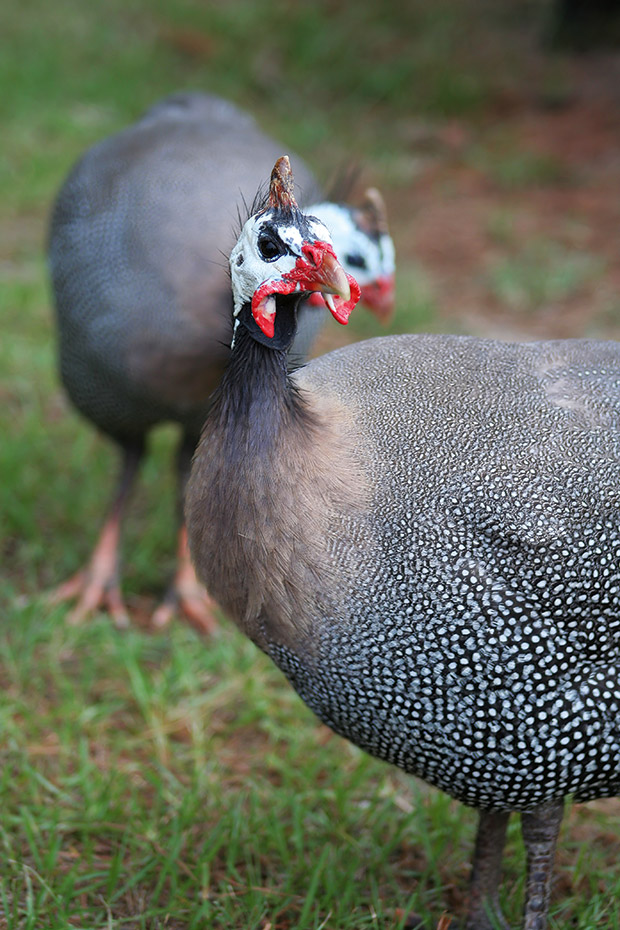
It may be unsightly, slow-witted and produce an intolerable noise, but the guinea fowl is a useful addition to any lifestyle block.
Words: Michael Andrew and Sue Clarke
Before you even see guinea fowl, you’ll hear them: a raucous racket of chirps and squawks like rusty springs on a dozen old beds. You’ll hear them if you’re a stranger, entering a property for the first time. But, frustratingly, you’ll hear them even if you’re the owner, approaching with the daily meal.
While the sound might assail the ears, the guinea fowl fracas is one of the main features that make the bird such a practical addition to a lifestyle block: they will sound the alarm at the first sight of owner and intruder alike.
Originating from Africa and first brought to New Zealand in the 1800s, guinea fowl have been growing in popularity for block owners in recent years because of their natural watchdog vigilance.
But there are a number of other benefits that make this fowl a favourite with rural property owners around the world.
THEY PROVIDE PEST CONTROL
Wherever guinea fowl are kept, they are valued for their ability to eradicate insects and small rodents. They are natural grazers that roam large distances in family groups, devouring anything that moves: cockroaches, snails, slugs, caterpillars, beetles, ants, fleas, crickets and even mice and small rats. This means you need to be mindful if you have any native bush on your block; they will gladly gobble down any native invertebrates they come across, potentially damaging vulnerable ecosystems.
In the US, guinea fowl are often kept exclusively to eradicate ticks, some species of which spread lyme disease, a debilitating illness that can affect people for life.
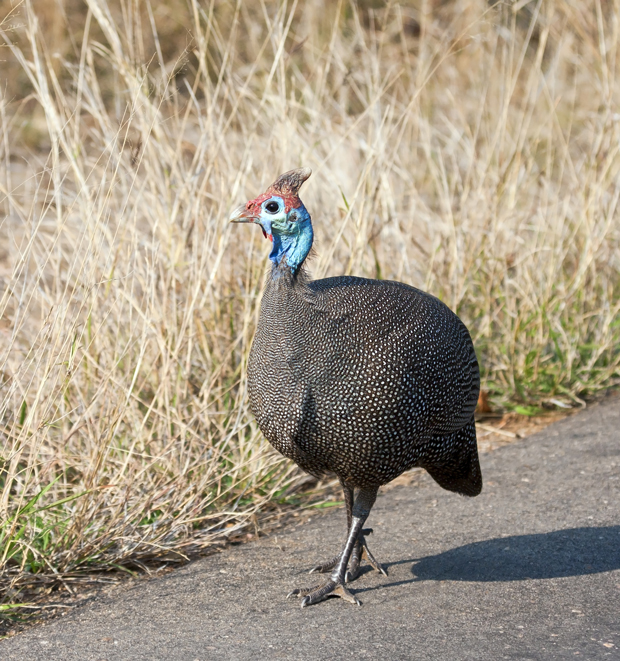
They are exceptionally adept at detecting predators, and birds in overseas countries have been known to mob and kill small snakes as a group. Guinea fowl are roving birds, and will spread out throughout your (or your neighbour’s) paddock, garden and orchard to scour the soil.
They graze for approximately 90% of their diet, so you’ll need to fill the balance with grain.
GUINEA FOWL ARE LOW MAINTENANCE
Guinea fowl are noticeably independent and aloof compared to chickens. They’ll come for a feed but won’t necessarily show any affection or familiarity with an owner. But this means they look after themselves quite well. They’re robust and don’t easily get sick, so don’t require as much treatment as chickens. If left without a shelter, they’ll happily roost in a nearby tree, where they’ll keep a watchful eye over the property.
They lay as many eggs as chickens, so will multiply easily and quickly if allowed to. However, there’s no guarantee guinea hens will lay where you want them to lay. They’ll often share nests or forget about their eggs (and their young) so you’ll need to keep a close eye on their hiding places.
Provided the birds are introduced to an environment when they’re young, they will generally be friendly around livestock and other types of fowl, so will graze alongside chickens without hostility.
However, they won’t take kindly to any roosters that harass them during mating season, so it’s best to keep them apart during this time.
THEY HELP AROUND THE GARDEN
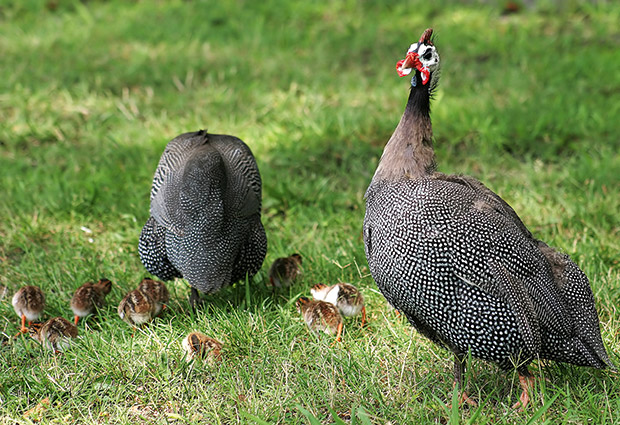
New Zealand doesn’t have as many issues with problematic or dangerous insects as other countries. We do, however, have a serious weed problem. Guinea fowl like a little vegetation in their diet, so will happily eat seeds and weeds alongside grubs on their daily excursions, reducing the need for as much spray around your property.
As they roam, they also produce droppings that can be collected and used as a rich fertilizer in your garden or orchard or thrown onto your compost pile. While they’re useful for defending your veggie garden against weeds, snails and caterpillars, you’ll want to keep them away if you have seedlings that aren’t yet established. You’ll also want to keep an eye on them in your orchard at harvest time or when fruit starts to fall.
THEY ARE DELICIOUS
Although smaller than chicken eggs, guinea fowl eggs are considered more nutritious with high amounts of protein, potassium, iron, amino acids and vitamin E, D and B. Like duck eggs, they’re ideal for those with allergies to chicken eggs. The catch, however, is that you’ll have to either have to persuade the birds to use nesting boxes or hunt down their random nesting sites every day.
With a noticeably plump body attached to its thin frame, guinea fowl meat has become something of a delicacy in the US and Europe. The meat is dark and rich – similar to pheasant – low in cholesterol and rich in essential fatty acids.
If you’re growing one for eating, poultry expert Sue Clarke recommends selecting a young bird – 12 weeks old and weighing 800g-1kg – and feeding it protein-rich poultry pellets.
While you can use almost any chicken recipe with guinea fowl, the older the bird is, the more likely the meat will dry out during cooking, so roasting or casseroling are the best options.
ENTERTAINMENT
“We adore our guinea fowl. They make us laugh and they make us cry. Sometimes they seem to be smart and other times they are just plain stupid! They work on a ‘one brain, many bodies’ mentality, so where one goes the rest follow but that one leader is forever changing direction and getting confused. Well, that’s guinea fowl for you!”
Fionna Appleton, Appletons Poultry, www.chooks.co.nz
5 things you might not know about guinea fowl
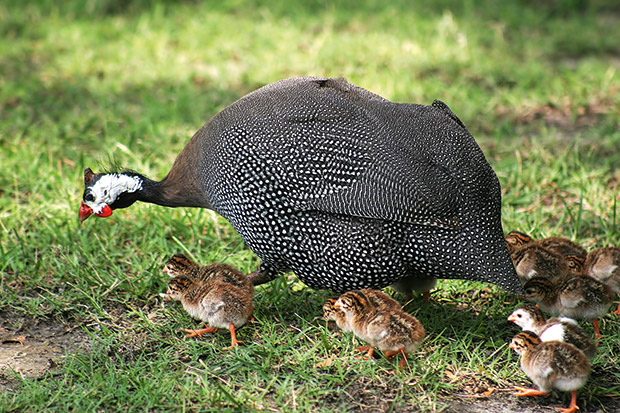
1. Young guinea fowl, known as keets, feel the cold so always make sure they have access to a very shallow tray of warm water, preferably sitting under or near the heat lamp so it stays warm.
2. You’ll mostly only see them running from danger, but guinea fowl are pretty good at flying. They’ll fly up to a roost in a tree, often over five metres up, and can fly for distances over 100m.
3. A good female will lay over 100 eggs a year if you are vigilant about hunting out her nesting spots and gathering the eggs up daily. If you don’t, she’ll go broody, and it’s not uncommon for one hen to sit on a communal nest of up to 40 eggs.
4. One male is usually best for four to six females – more than that and you’ll start to get aggression and territory issues.
5. When you get your guinea fowl, keep them locked up for at least 10 weeks so they clearly understand where home is. One good tip for when you do start letting them out: only let half of them out to roam at a time, as it encourages roaming birds to return to the noise of the remaining birds.
HOW TO GROW GUINEA FOWL
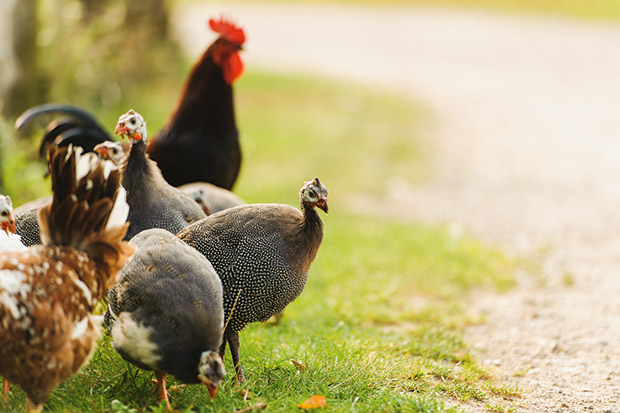
Raising a guinea fowl isn’t as easy as you might think. For birds that are excellent at detecting predators or intruders, they are terrible at keeping track of their young (keets).
This is why a lot of people use a reliable broody hen or incubate the eggs. Keets are tiny and tend to get left behind in the grass by their parents who never seem to notice just how many babies they have.
Keets hatch after 26 days and brood in a very similar manner to chicks, but need to be fed a high protein diet:
Days 0-30: 24-26% protein, gamebird feed, turkey starter
Days 31-60: 18-20% protein
Day 61 onwards: 16% protein, regular chicken mash or crumbles, not pellets.
If you can’t find a feed with 18-20% protein, mix a higher protein feed with regular 16% layer feed.
BUT THEY AREN’T FOR EVERYONE
While there are countless ardent guinea fowl fans out there, the bird isn’t everyone’s cup of tea. Those who aren’t taken with guinea fowl typically cite its total lack of affection, its mercurial intelligence and, most of all, the racket it makes at all hours.
The guinea fowl’s call is so notorious that city-dwellers in the US have reportedly bought noisy birds as a way to exact revenge against annoying neighbours.
GOOD RESOURCES
Love this story? Subscribe now!
 This article first appeared in NZ Lifestyle Block Magazine.
This article first appeared in NZ Lifestyle Block Magazine.
